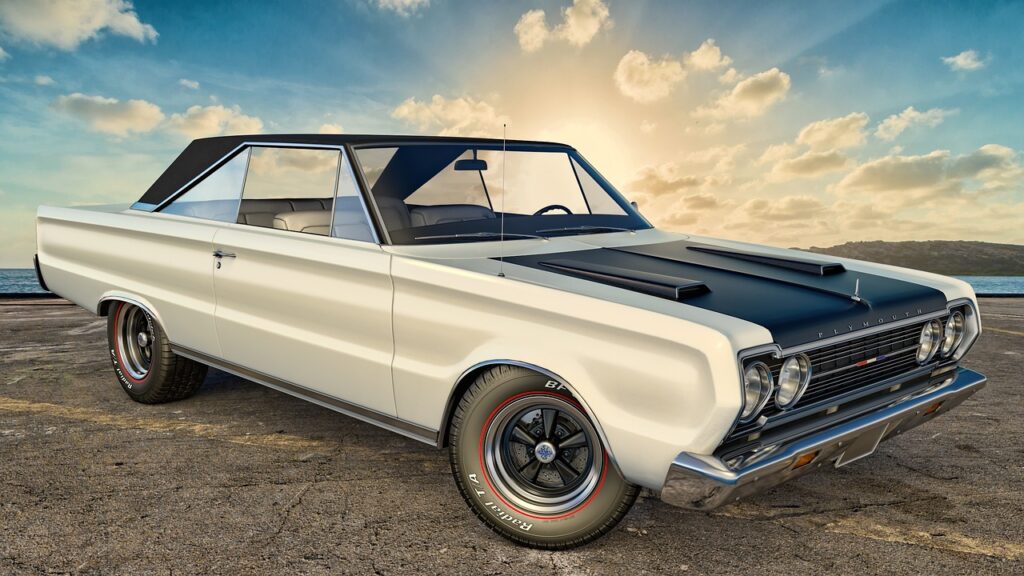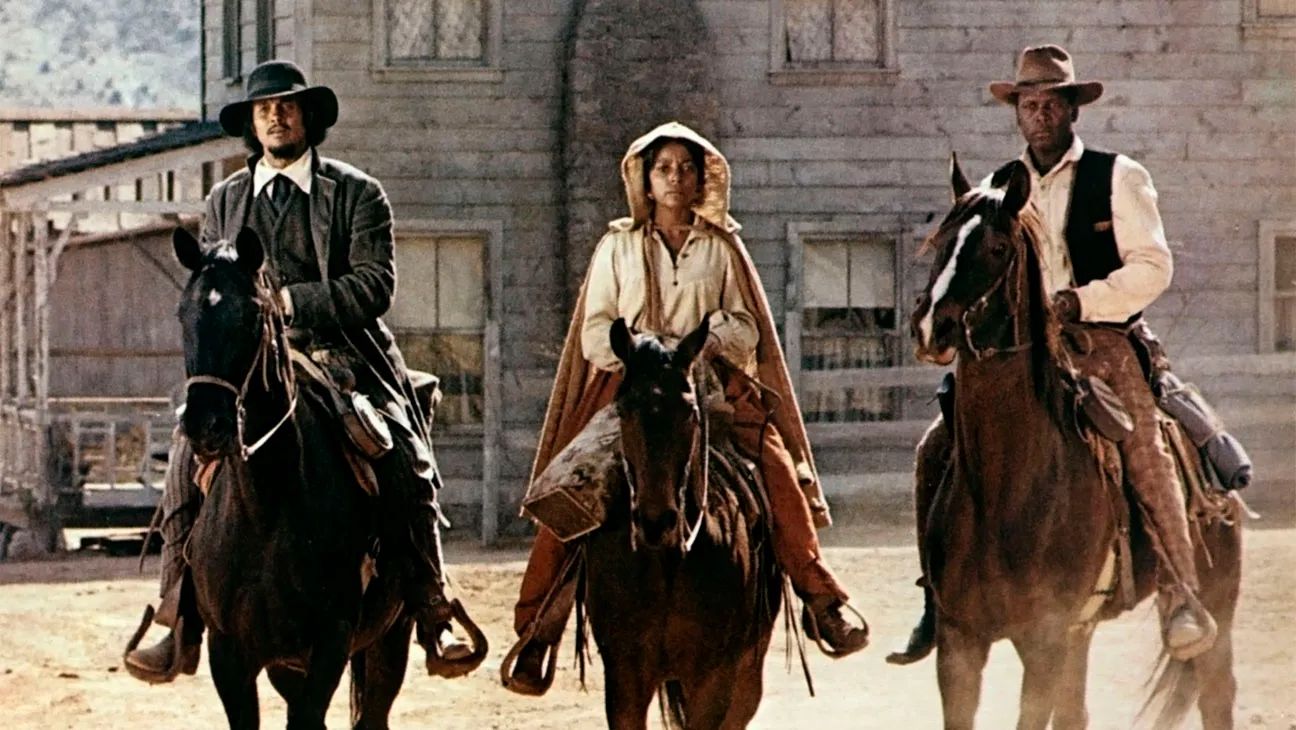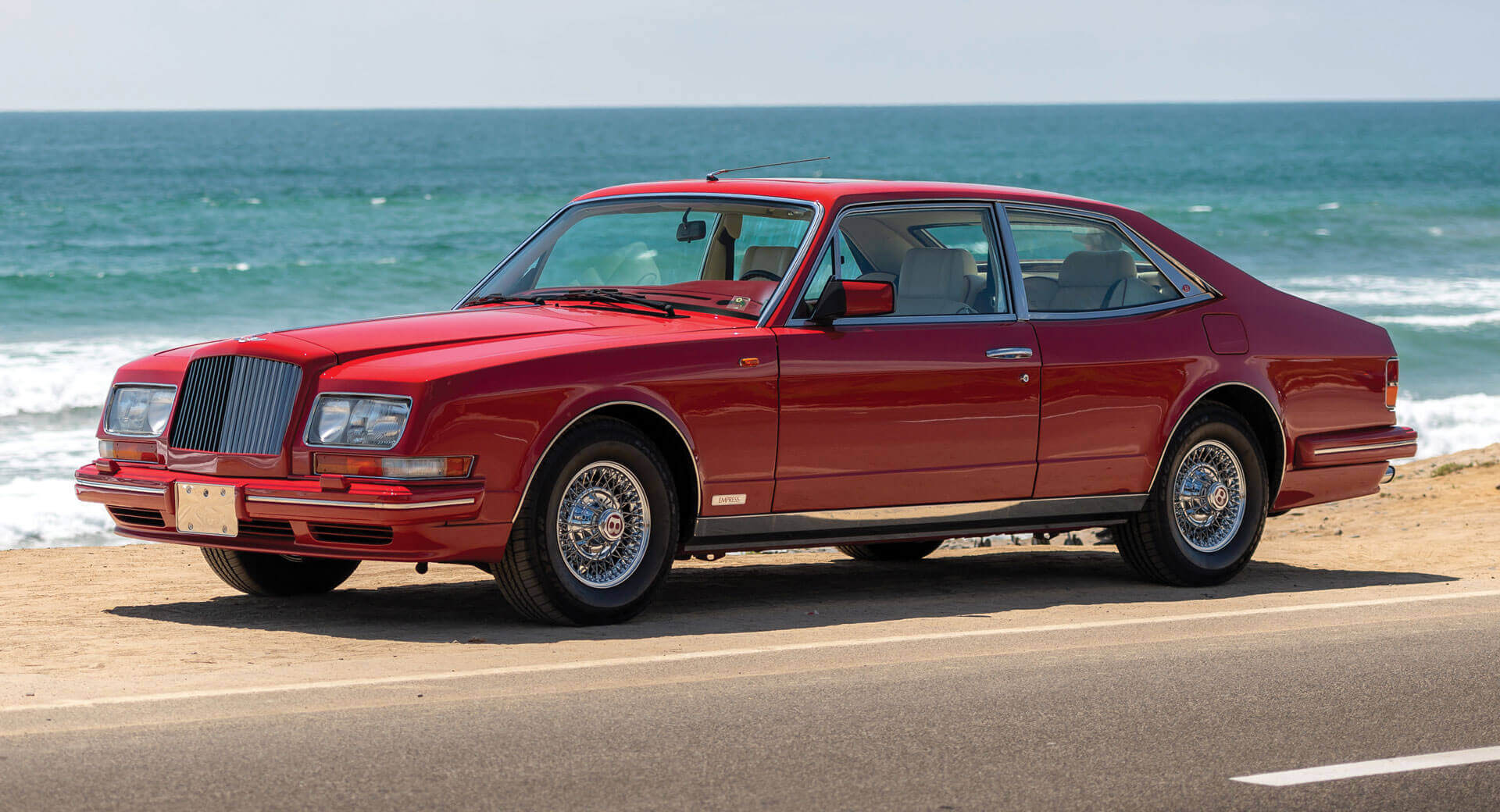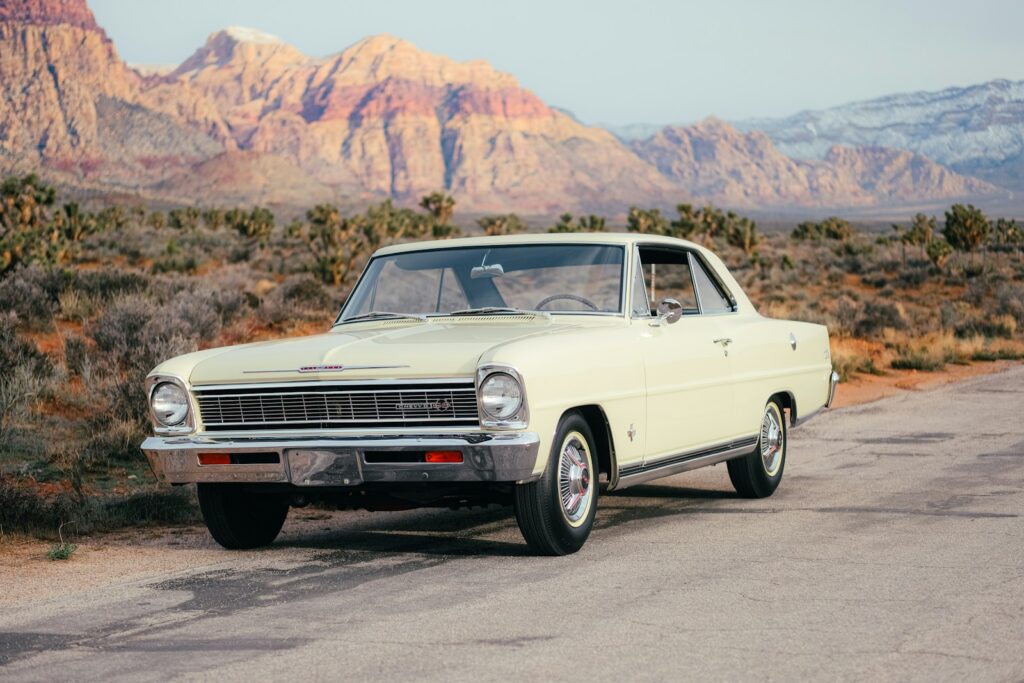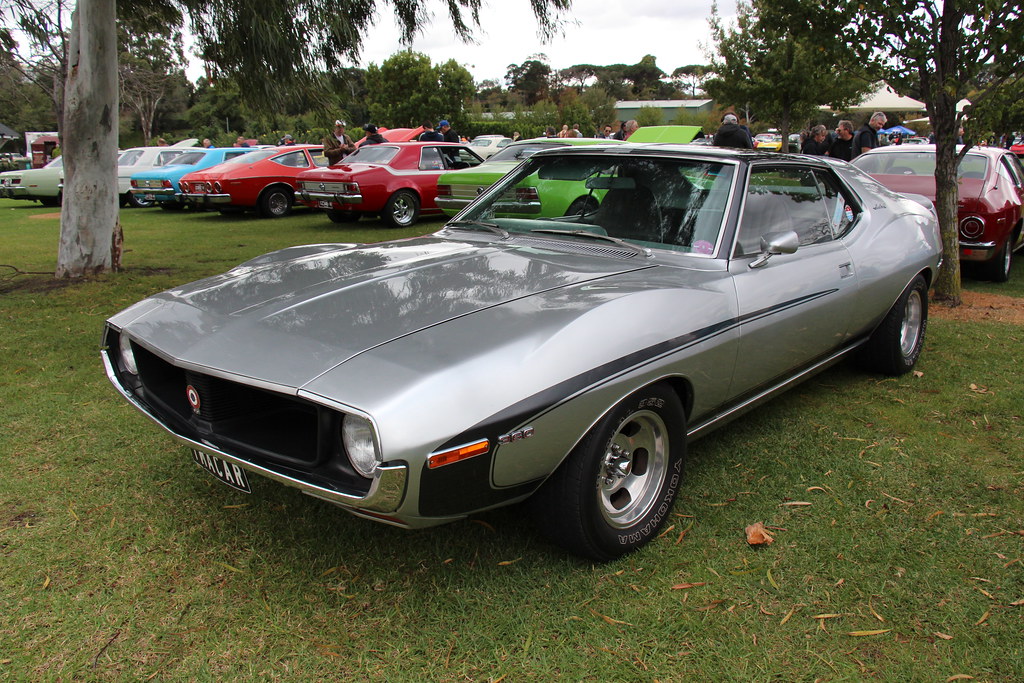
The automotive landscape of the late 1960s was a battleground of titans, a golden age where raw horsepower and captivating style reigned supreme. Amidst the dominant forces of Ford, Chevrolet, and Chrysler, a challenger emerged from an unlikely corner: American Motors Corporation. Long known for practical, economical vehicles, AMC dared to venture into the high-stakes world of muscle cars, aiming to prove that innovation and audacity could compete with sheer market size.
This ambitious spirit gave birth to the AMC Javelin, a car that would etch its name into history as one of the most compelling and often underappreciated performance machines of its era. With its aggressive stance, potent engine options, and a price point that made performance accessible, the Javelin quickly carved out a distinctive niche. It wasn’t just another pony car; it was a statement from a company determined to outsmart, if not outspend, its colossal rivals.
In this deep dive, we’ll peel back the layers of the Javelin’s storied past, exploring its genesis, the remarkable engineering beneath its striking facade, and the myriad options that made it a truly unique offering. For enthusiasts and collectors alike, understanding the nuances of this “David among Goliaths” reveals why the Javelin remains a truly captivating classic today. Let’s embark on this high-octane journey into the heart of AMC’s rebel muscle car.
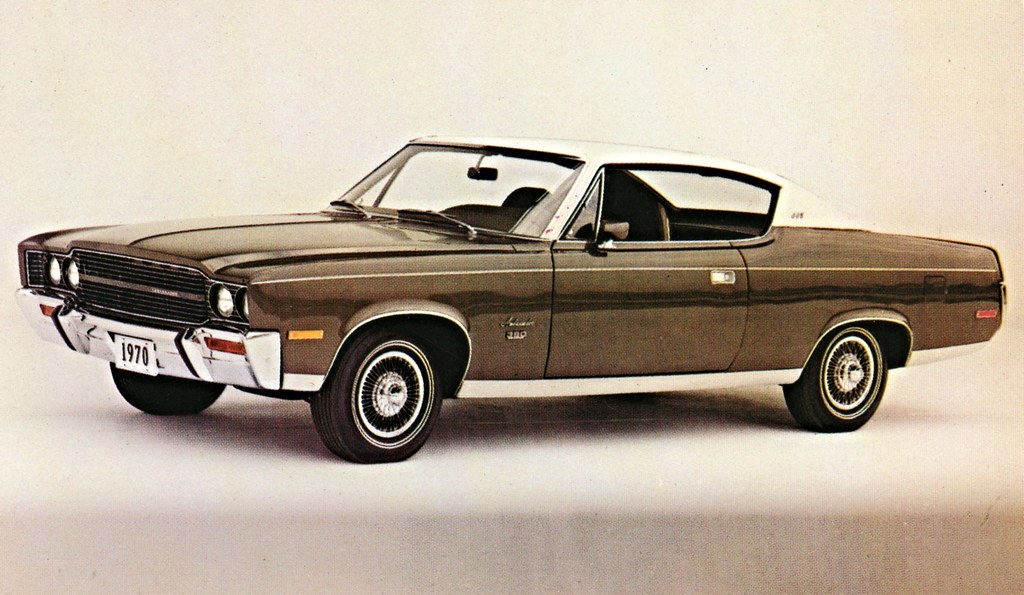
1. **The Genesis of the AMC Javelin: A Rebel’s Entry into the Muscle Car Wars**The story of the AMC Javelin is intrinsically linked to the American Motors Corporation itself, a company formed in 1954 from the merger of the Nash-Kelvinator Corporation and the Hudson Motor Car Company. For many years, AMC’s identity was built around creating smaller, more affordable, and typically underpowered transportation. This perception, however, was about to be dramatically challenged by the burgeoning muscle car movement that swept the nation in the mid-1960s.
As demand for higher-horsepower cars skyrocketed, AMC recognized a pivotal moment to redefine its image. The company set out to design a vehicle that could offer the best of all worlds: a powerful, stylish, and attainable car capable of going wheel-to-wheel with established titans like the Ford Mustang. This bold ambition led to the debut of the AMC Javelin in 1968, marking AMC’s decisive entry into the pony car craze.
The Javelin represented a significant shift for AMC, symbolizing their commitment to performance and a willingness to stand outside the norm. Its “bold styling, ample power, and upstart nature” positioned it as a compelling performance car option from the outset. This move was not just about selling cars; it was about transforming the company’s perception from economical to genuinely performance-oriented, a daring strategy for a manufacturer with limited resources compared to the “Big Three.”
Designed by AMC’s top stylist Dick Teague, the Javelin was specifically crafted to take on the Ford Mustang, showcasing AMC’s determination to compete directly in the rapidly expanding pony car segment. Its introduction during the height of the muscle car era in 1968 signaled AMC’s full-throttle answer to the demand for exhilarating American performance. The Javelin’s arrival was a clear declaration that AMC was ready to fight for its place in the performance pantheon.
2. **First-Generation Javelin: Engines, Evolution, and Early Performance**The first-generation AMC Javelin, produced from 1968 to 1970, displayed a fascinating split personality when it came to its initial engine choices, catering to a wide spectrum of buyer preferences. At the more economical end, the base model featured a 3.8-liter (232-cubic-inch) straight-six engine, which produced a “meager 145 horsepower” but commendably managed to achieve “up to 25 mpg on the highway.” This offering ensured the Javelin remained accessible to a broader market, staying true to AMC’s roots of affordability.
For those craving more power, the Javelin quickly escalated its engine options. A larger 4.8-liter (290-cubic-inch) V-8 engine was available, offering a more robust 225 hp. Stepping up further, the 5.6-liter (343-cubic-inch) V-8 truly cranked things up, delivering either 235 or 280 hp, depending on whether the buyer opted for a two- or four-barrel carburetor. This range allowed buyers to tailor their Javelin’s performance to their specific desires, from spirited cruising to more serious acceleration.
The true pinnacle of the first-generation Javelin’s power offerings arrived in mid-1968, when AMC unveiled a snarling 6.4-liter (390-cubic-inch) V-8. This formidable engine placed the Javelin “at the top of the Javelin food chain with an impressive 315 hp,” firmly establishing its muscle car credentials. This 390 V-8 became a hallmark of the Javelin’s performance capabilities, appealing directly to enthusiasts seeking genuine high-horsepower thrills.
Further engine evolution occurred in 1970, coinciding with a redesign of the Javelin. During this year, the 290- and 343-cubic-inch engines received a significant upgrade: their stroke was elongated, bumping their sizes up to 304 and 360 cubic inches, respectively. This continuous refinement and increase in displacement showcased AMC’s commitment to keeping the Javelin competitive and exciting in the rapidly evolving muscle car arena, ensuring it remained a compelling option for power-hungry drivers.
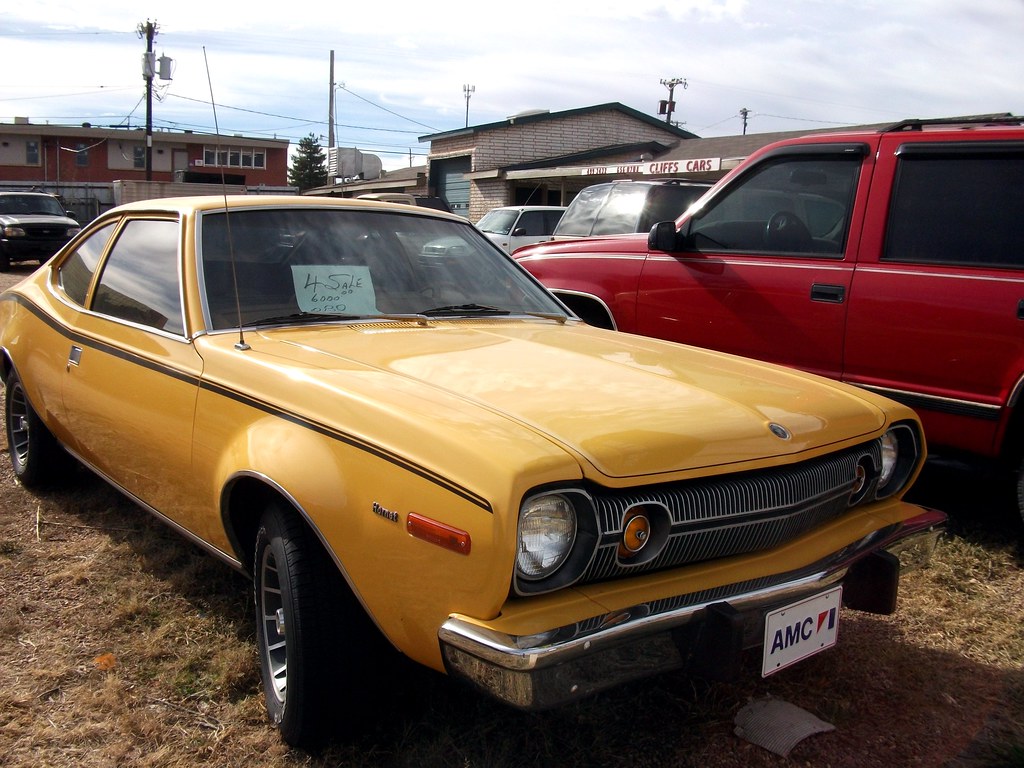
3. **Second-Generation Javelin: The Shift to SAE Ratings and Power Dynamics**The second-generation Javelin, spanning the model years 1971-1974, ushered in a period of significant transformation, marked by both a fresh aesthetic and a “confusing change under the hood.” While the 1971-1974 Javelin received “bigger engine options beginning in 1970,” a new mandate profoundly impacted how these power figures were presented. The U.S. adopted the SAE horsepower rating method, which proved more accurate but resulted in less impressive advertised numbers compared to the gross figures that predated them.
This shift meant that even with robust engines, their official horsepower ratings appeared to drop. For instance, the base 3.8-liter (232-cubic-inch) I-6 engine was now rated at just 100 hp, and a larger 4.2-liter (258-cubic-inch) I-6 produced 110 hp. These net figures, while more realistic, often created the illusion of diminished performance compared to the previous gross ratings, even if the engines themselves hadn’t drastically changed in output.
The eight-cylinder engines of the second generation also reflected this new rating system. A 5.0-liter (304-cubic-inch) engine now made 150 hp, and a larger 5.9-liter (360-cubic-inch) V-8 pumped out 195 hp with a two-barrel carburetor or 225 hp with a four-barrel carb. Despite these seemingly lower numbers, the Javelin still offered substantial performance, demonstrating AMC’s ability to adapt its powertrains while navigating evolving industry standards.
The pinnacle of the second-generation Javelin’s engine offerings was the “big 6.6-liter (401-cubic-inch) V-8, making a now-impressive 255 hp,” which held the title of the biggest block in the Javelin world. It’s crucial to note that this “now-impressive 255 hp” for the 401 V-8 in 1971 had been rated at “an impressive 330 horsepower” upon its debut that same year, before the full effect of the SAE net horsepower ratings became widely known and applied. The change in rating methodology, rather than a significant mechanical downgrade, accounted for the perceived drop in power.
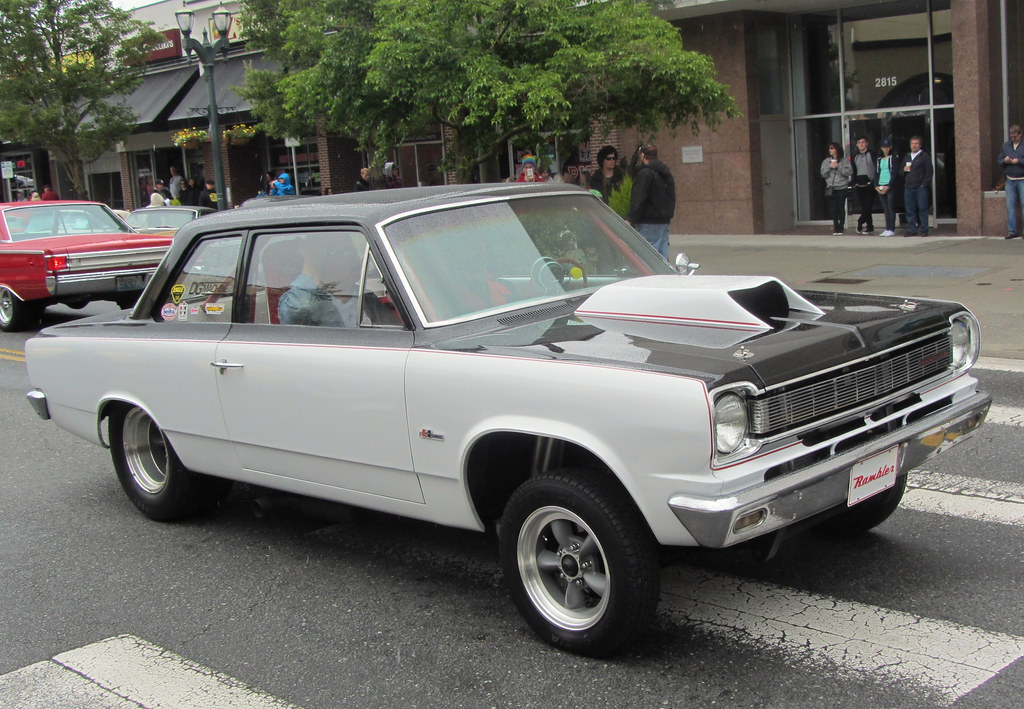
4. **Transmission Innovations: The Manuals and the “Shift-Command” Automatic**The AMC Javelin provided drivers with a range of transmission choices, ensuring that both traditionalists and those seeking convenience could find their ideal setup. Depending on the engine selected, the Javelin offered either a three- or four-speed floor-mounted manual transmission. These manual gearboxes allowed for direct driver engagement, a feature highly prized by performance enthusiasts who enjoyed the control and tactile feedback of shifting their own gears.
Beyond the standard manual options, AMC introduced an innovative automatic transmission known as its “Shift-Command Automatic.” This unit was available as either column- or console-mounted, offering flexibility in interior layout. What made the Shift-Command particularly noteworthy was its pioneering approach to manual-like control within an automatic platform, a concept that was quite advanced for its time.
In what was one of the earlier “man-u-matics,” the Shift-Command system allowed drivers to have a degree of fun and control typically associated with a clutchless manual. When “D” was selected, it operated as a fully automatic transmission, seamlessly shifting through gears like any ordinary auto. This provided the ease and comfort many drivers desired for daily commuting or relaxed cruising.
However, the Shift-Command truly distinguished itself with its manual shifting capabilities. By selecting “1,” the car would start and remain in first gear without upshifting, ideal for specific driving conditions or holding a gear for maximum acceleration. Similarly, “2” allowed for a second-gear start, also without automatic upshifting. This innovative design permitted drivers to manually shift from first, then second, and finally into drive, offering a level of interaction “without all that silly third-pedal business,” remarkably similar in spirit to today’s paddle-shifting DCTs and PDKs.
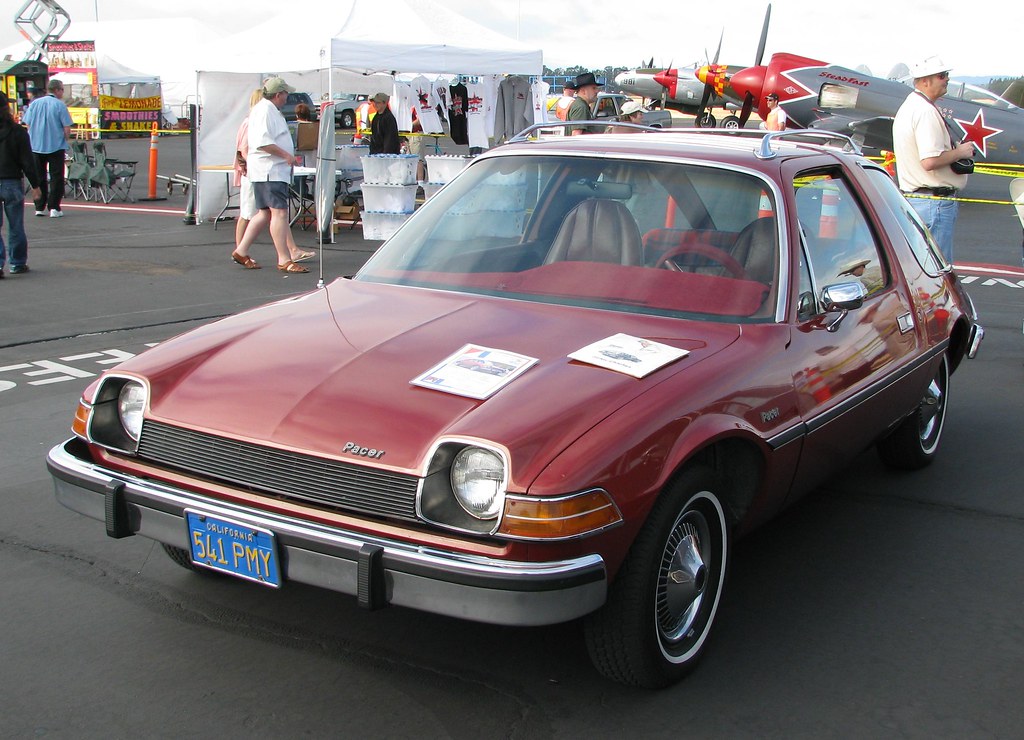
5. **The “Go Package”: Unlocking the Javelin’s Performance Potential**For those who sought to truly unleash the Javelin’s inherent performance capabilities, AMC offered a highly desirable option known as the “Go Package,” or “Go Pack” for short. Internally referred to by dealers as “The Performance Package,” this offering was a comprehensive suite of upgrades designed to transform the Javelin into an even more formidable machine on the road. It’s important to note that the Go Pack was not available with any six-cylinder Javelin or one equipped with a 304-cubic-inch V-8, emphasizing its focus on higher-performance V-8 models.
The Go Pack included an impressive array of features that enhanced both the car’s dynamics and its aggressive aesthetic. Among its notable inclusions were dual exhausts, which not only improved engine breathing but also provided a more resonant, muscular soundtrack. Power disc brakes ensured superior stopping power, a critical upgrade for a performance vehicle. Stiffer springs and heavy-duty anti-roll bars significantly sharpened the Javelin’s handling, allowing it to tackle corners with greater precision and confidence.
Further enhancing its track-ready demeanor, the Go Pack added wider tires for increased grip, a heavy-duty cooling fan (complete with shroud) to maintain optimal engine temperatures during demanding use, and quick-ratio steering for more responsive inputs. A “Twin Grip” limited-slip differential was also standard, ensuring power was efficiently delivered to both rear wheels, maximizing traction during hard acceleration. These mechanical upgrades collectively elevated the Javelin’s driving experience to a true performance level.
Cosmetically, the Go Pack left no doubt about the Javelin’s sporting intentions. It featured a roof spoiler, which contributed to its aerodynamic profile, and a large-faced 140-mph speedometer and 8,000-rpm tachometer, providing critical performance data at a glance. Most strikingly, the package included Ram Air carburetion with an AMX “power blister” hood, providing functional air induction and an undeniably aggressive look. Of course, no performance package would be complete without iconic racing stripes, which were also a standard issue, visually broadcasting the Javelin’s enhanced capabilities.
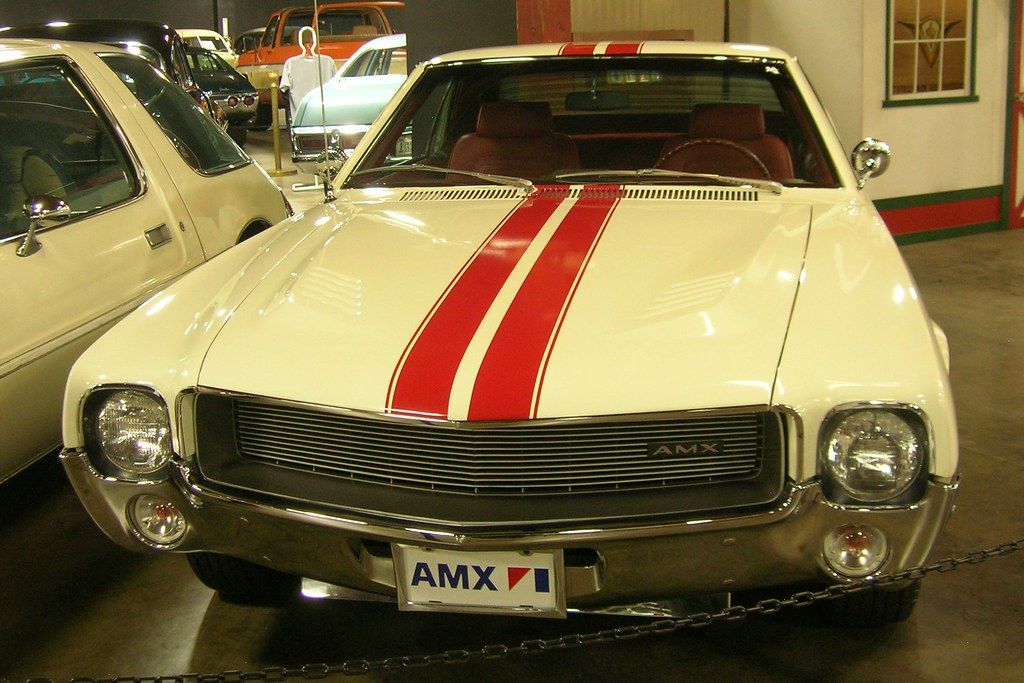
6. **The AMC Javelin SST: A Blend of Super Sport and Touring Luxury**The AMC Javelin SST, an acronym for “Super Sports Touring,” represented the pinnacle of luxury and performance within the Javelin lineup from 1968 to 1970. This premium trim level was designed to elevate every aspect of the Javelin’s driving and ownership experience, blending the raw power of a muscle car with a refined touch of comfort and upscale appointments. It offered an affordable alternative to the more expensive models from the Big Three, carving out a distinctive niche for AMC.
The SST package was a comprehensive offering that included both “luxury and go-fast goodies.” Inside, drivers and passengers were treated to reclining front seats, providing enhanced comfort for longer journeys or more relaxed cruising. A sophisticated wood-grain interior trim added a touch of elegance and warmth to the cabin, differentiating it from the more spartan interiors of base models. These interior refinements showcased AMC’s effort to provide a more premium experience.
Aesthetically, the Javelin SST also boasted distinctive exterior enhancements that communicated its elevated status. Rally stripes adorned the body, adding a visual flair that hinted at its performance capabilities without being overtly aggressive. A sport steering wheel completed the interior, offering a more engaging feel for the driver. These elements collectively made the SST a genuinely appealing option for buyers who desired both exhilaration and a degree of sophistication from their muscle car.
However, the SST’s position as the top trim level shifted with the 1971 model year. When the AMX transitioned from being its own standalone car to an optional trim package on the Javelin for the 1971 and ’72 model years, the SST was “relegated to second best.” Despite this reordering, the SST continued to offer a more luxurious layout than the newly performance-oriented AMX trim, maintaining its identity as the comfort and style champion within the Javelin family. It remained a compelling choice for those prioritizing “Speed, Style, and Substance” in a single package.

7. **The AMC AMX: From Stand-Alone Sports Car to Performance Trim**With an ambitious goal of “shifting (no pun intended) the company’s perception from economical to performance,” AMC made a bold move by unveiling a sportier, two-seat version of its Javelin, christening it the AMX, which stood for “American Motors Experimental.” From 1968 until 1970, the AMX existed as its own distinct model, a genuine two-seat hot rod built on the Rambler American platform, much like the Javelin. However, its crucial difference was a significantly shortened wheelbase, measuring a mere 97 inches—an inch shorter than America’s other two-seat sports car, the Chevy Corvette.
When it debuted in 1968, the AMX was exclusively offered as a two-door hardtop, embodying pure sports car ethos. Unlike the more versatile Javelin, the AMX could only be had with a V-8 engine, underscoring its performance-first philosophy. Furthermore, transmission choices were limited to either a four-speed manual or a three-speed automatic, intentionally omitting the cheaper three-speed manual option available in the Javelin to solidify its higher-performance positioning.
The AMX’s engineering was geared towards delivering an exceptional driving experience. Heavy-duty shocks and springs were standard, working in conjunction with traction bars and a front anti-roll bar. These components were meticulously chosen and integrated “to help make the AMX a genuine sports car no matter what kind of road it was driven on.” It was a vehicle designed to handle, accelerate, and truly perform, backing up its aggressive styling with serious substance.
A significant evolution occurred in 1971 when the AMX merged with the Javelin, transitioning from a standalone vehicle to a high-performance trim option of the base car. This rebranding created the “Javelin AMX,” which benefited from the Javelin’s makeover in 1971, receiving “some Trans Am-inspired upgrades.” A Ram Air cowl induction fiberglass hood and functional front and rear spoilers became hallmarks, continuing to separate the AMX as the distinct performance badge of the AMC brand, even as it became an integral part of the Javelin family.
Diving deeper into the Javelin’s compelling narrative, we uncover the intricate details of its most powerful heartbeats, its impressive on-road prowess, and the captivating special editions that cemented its legacy. From the roar of its potent V8s to its competitive spirit on the track, the Javelin, particularly in its AMX guise, wasn’t just a car; it was a statement. This section will also shed light on its current standing in the collector’s market, revealing why this often-underrated muscle car continues to command attention. Let’s continue our journey through the Javelin’s enduring impact.

8. **What Engines Were Available for the AMX?**When the AMX burst onto the scene in 1968 as its own distinct two-seat hot rod, its powertrain lineup was designed to leave no doubt about its performance intentions. At its debut, the AMX could be specified with one of three formidable AMC Gen-2 small-block V-8 engines, each tailored to deliver impressive power. Buyers had the choice of a 290-cubic-inch V-8 producing 225 horsepower, a more potent 343-cubic-inch V-8 cranking out 290 horsepower, or the top-tier 390-cubic-inch V-8 that roared with a significant 315 horsepower. This strong initial offering immediately positioned the AMX as a serious contender in the sports car segment.
As the muscle car landscape evolved, so too did the AMX’s engine options. In 1970, AMC introduced its Gen-3 ‘tall-block’ engines, distinguished by their taller deck heights compared to the Gen-2 powerplants. This update saw the 290 V-8 gracefully retired from the lineup, making the 360-cubic-inch V-8 the new default base engine for the AMX. For those seeking even greater thrills, the robust 390 V-8 received a notable 10-horsepower bump, now delivering an impressive 325 horsepower, further solidifying the AMX’s performance credentials.
Just a year later, in 1971, the AMX engine lineup welcomed an even larger and more powerful addition: the 401-cubic-inch V-8 engine. This colossal motor made its debut with a staggering 330 horsepower, representing the pinnacle of AMC’s V-8 engineering for the AMX. It provided the ultimate grunt for what was, by then, a Javelin AMX trim package, ensuring that the performance spirit of the original two-seater lived on with even greater force.
However, this era also brought a significant change to how these impressive power figures were advertised. The adoption of SAE horsepower ratings meant that the excitement level for all muscle cars, including the AMX, seemingly dropped overnight. Without any actual mechanical changes, the mighty 401 V-8, which had debuted at 330 horsepower, saw its advertised rating plummet to 255 horsepower for the 1972 model year. This adjustment was purely a measurement standard, but it created a perceived decline in power that often confused enthusiasts.
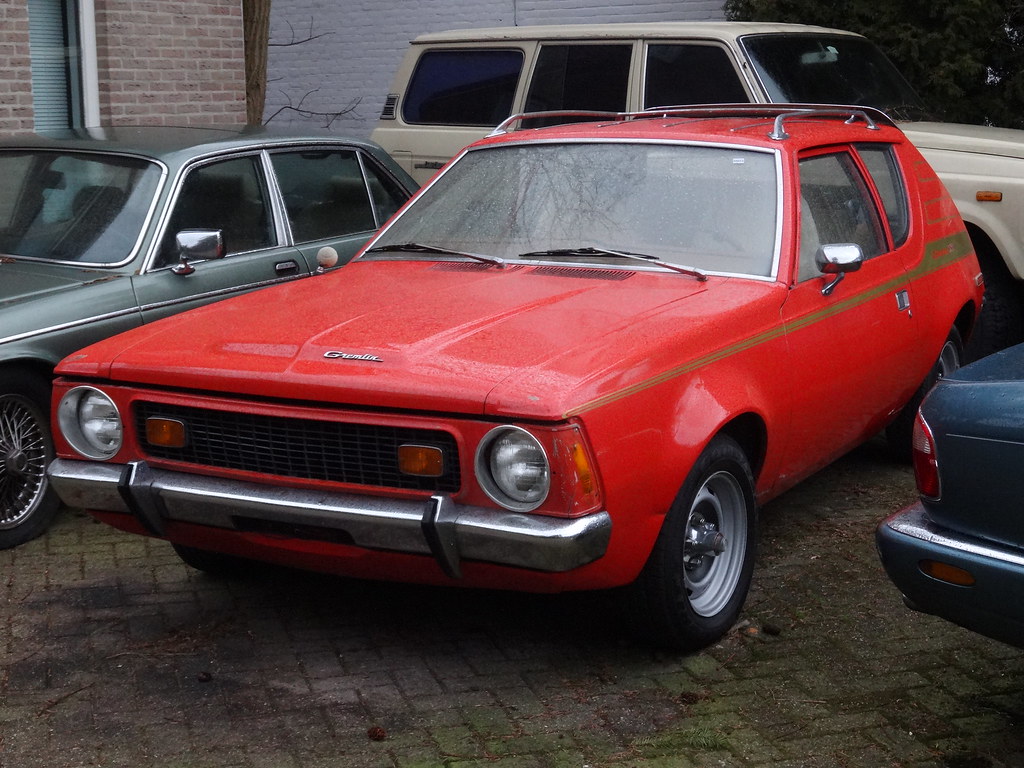
9. **How Fast Was the AMC Javelin?**Determining the definitive top speed of an AMC Javelin can be a challenging endeavor, largely due to the sheer variety of engine configurations and rear axle ratios offered throughout its production run. In an era where manufacturers and owners were more preoccupied with exhilarating 0-60 mph sprints and blistering quarter-mile times, precise top speed data was often less of a priority and thus remains somewhat scarce for many classic muscle cars, including the Javelin. However, the available data certainly paints a picture of its formidable capabilities.
Hot Rod magazine, a trusted authority in automotive performance, provided some valuable insights with their period testing. They specifically put a 1970 Javelin to the test, equipped with the potent 390 cubic inch, 325 horsepower engine, a four-speed manual transmission, and a 3.54:1 rear end. Under these specific conditions, the Javelin demonstrated its high-speed prowess by reaching approximately 115 mph. While not a definitive maximum for every Javelin, this figure showcases the car’s potential.
In terms of outright acceleration, the Javelin proved itself more than capable of holding its own against fierce competitors. Hot Rod magazine’s testing included two notable versions of the Javelin. One variant, sporting a 343 cubic-inch V-8 engine and a four-speed manual transmission, completed the 0-60 mph dash in a respectable 7.6 seconds. This car also powered through the quarter-mile in 15.1 seconds, achieving a trap speed of 93 MPH, underscoring its solid straight-line performance.
For those seeking even more explosive acceleration, the Javelin truly delivered with its 390 cubic-inch V-8 version. This more powerful iteration, boasting 325 horsepower and 425 lb-ft of torque, managed to sprint from 0-60 mph in a scorching 5.7 seconds. It conquered the quarter-mile in an even faster 14.6 seconds, a highly impressive time for the era. While a specific trap speed for the 390 V-8 quarter-mile wasn’t provided, these acceleration figures firmly establish the Javelin as a true muscle car, built to thrill from a standstill.
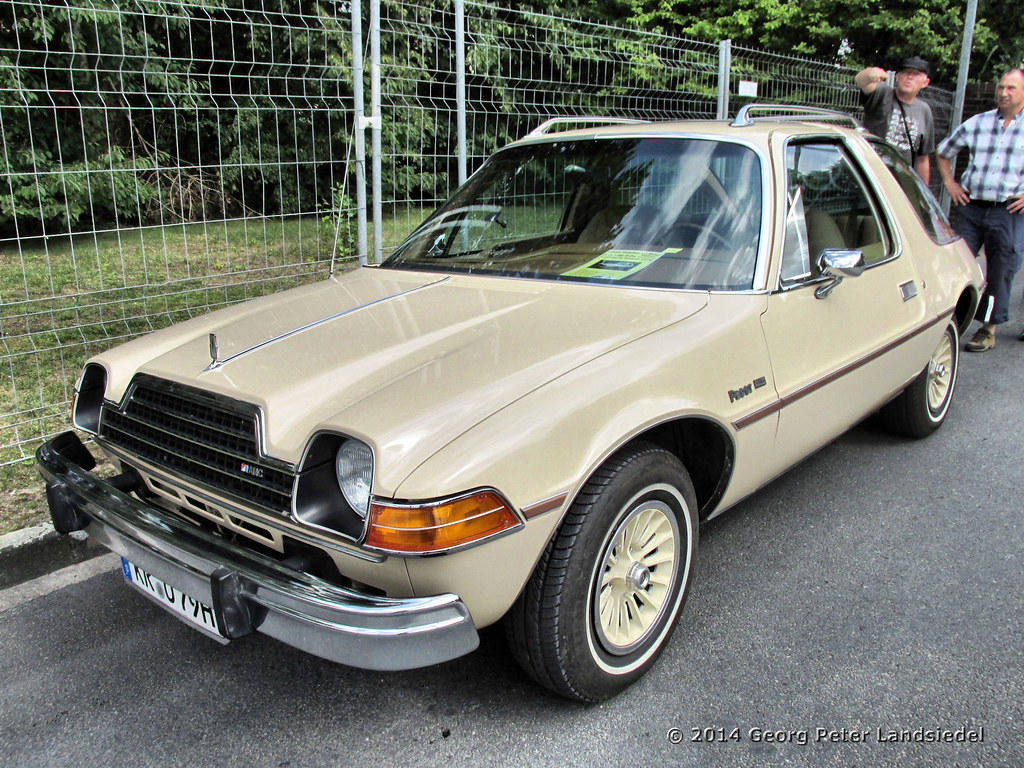
10. **What Was the Largest AMC Engine?**Specifically pertaining to the AMC Javelin’s production run, the largest and most powerful engine offered was the massive 6.6-liter (401-cubic-inch) V-8. This formidable powerplant made its debut for the 1971 model year and remained available through 1972, serving as the absolute pinnacle of performance for the Javelin lineup. It truly embodied the spirit of the muscle car era, delivering raw, unadulterated power directly to the rear wheels.
In its inaugural year, 1971, this impressive 401 V-8 engine cranked out a whopping 330 horsepower and an equally substantial 425 lb-ft of torque. These figures were undoubtedly headline-grabbing at the time, establishing the Javelin’s credentials among the most powerful offerings from its rivals. However, the automotive industry was on the cusp of a significant change in how engine output was measured, a shift that would dramatically alter advertised horsepower figures.
The following year, 1972, saw the introduction of the new SAE net horsepower rating system. Prior to this, manufacturers were permitted to advertise engine power ratings obtained from engines that were tested without many of the power-sapping accessories, such as an alternator, radiator fan, or water pump, that would eventually be fitted to production vehicles. Furthermore, testing often occurred with performance-enhancing long-tube headers instead of the factory exhaust manifolds destined for showroom models.
The consequence of this new, more realistic testing standard was a noticeable—and for some, disheartening—drop in advertised horsepower across the board. The big 401 V-8 in the AMC Javelin, virtually unchanged mechanically from its 1971 iteration, was now rated at a comparatively “paltry” 255 horsepower and 345 lb-ft of torque. Despite this perceived reduction, it’s crucial to understand that the engine’s actual performance capabilities remained largely consistent; only the measurement standard had changed. The 401 V-8 thus remained the largest and most potent offering on the Javelin option sheet, continuing to provide serious muscle for discerning buyers.

11. **What Was the AMC Javelin SST Trans Am Edition?**AMC harbored serious ambitions for its Javelin beyond just the drag strip; the company yearned for respect as a legitimate muscle car on the racetrack. To achieve this, AMC boldly entered the Javelin into the highly competitive SCCA Trans Am Series in 1968. Over the next two years, the Javelin proved its mettle by scoring several top-five finishes, demonstrating its capability to run with the best. To commemorate these on-track successes, celebrate its rising status, and perhaps subtly boast to the ‘Big Three’ rivals, AMC conceived a truly unique special edition: the SST Trans Am Edition of its mighty Javelin.
This particularly distinctive 1970 Javelin was built upon the foundation of the then-top-tier SST trim level, ensuring a blend of performance and premium features. Its exclusivity was immediately apparent, as only 100 examples were ever created, making it an exceptionally rare find even at its initial “lofty” price of $3,995. Each of these highly collectible cars was finished in a strikingly patriotic paint scheme, featuring Matador Red, Frost White, and Commodore Blue. This vibrant, ‘Bomb Pop’ inspired livery visually broadcasted its American racing heritage and set it apart from anything else on the road, turning heads wherever it went.
The SST Trans Am Edition was far more than just a paint job; it was a bona fide performance machine. It came factory-fitted with the formidable 325-horsepower 390-cubic-inch V-8 engine, ensuring ample power for both street and track. This power was expertly funneled through a robust four-speed Borg Warner transmission, topped off with a precise Hurst shifter, providing an engaging and direct driving experience. The highly popular Go Package, a comprehensive suite of performance upgrades, was also standard issue, as was a heavy-duty suspension system, all contributing to its track-ready demeanor.
While the later Mark Donohue Special Edition ultimately satisfied the SCCA homologation requirements for racing purposes, the SST Trans Am Edition remains the undisputed top prize for collectors worldwide. Its immense desirability stems not only from its incredibly limited production run but also from its extravagantly American paint scheme, which perfectly encapsulated the exuberance and competitive spirit of the muscle car era. It stands as a vibrant testament to AMC’s audacious foray into motorsports and a highly sought-after piece of automotive history.

12. **What Was the AMC Javelin Mark Donohue Special Edition?**In a pivotal moment for AMC’s racing aspirations, the legendary racer Mark Donohue and his esteemed Penske Racing team made a significant move in 1970, departing from Chevrolet to join forces with American Motors. Their mission: to pilot the Javelin in the demanding Trans-Am races. Donohue, an engineer by trade, quickly identified a critical need for the Javelin to gain a competitive edge on high-speed tracks: an oversized ducktail spoiler to provide crucial rear downforce. To comply with the SCCA’s homologation rules, which mandated a minimum production of 2,500 units for a car to be considered a “factory” racer, AMC embarked on creating a special street version.
Thus, the Mark Donohue Special (MDS) Edition was born, meticulously built between January and April of 1970. This timing was far from coincidental, concluding just before the start of the Trans-Am racing season, with a final production count of 2,501 units—just barely exceeding the SCCA’s requirement. This strategic production run allowed AMC to legitimize Donohue’s crucial aerodynamic modification for the track, directly linking the street car to its racing counterpart and underscoring AMC’s commitment to winning.
Opting for the MDS Edition meant an additional $1,100 charge for buyers, but it came packed with a compelling array of performance and aesthetic enhancements. The package included the sought-after 360 Go Package, which brought a host of dynamic upgrades, alongside a functional Ram Air hood for improved engine breathing. Inside, the SST interior and exterior door package contributed to a more refined feel, complemented by elegant wood-grain trim, blending performance with a touch of luxury.
For those who craved ultimate power, the robust 390-cubic-inch V-8 was available as an upgrade for an extra $325. Transmission choices were equally appealing, offering either a floor-mounted Shift-Command three-speed automatic or a direct Borg Warner T-10 four-speed manual, catering to different driving preferences. Interestingly, the iconic racy spoiler, which was essentially the car’s raison d’être, along with the distinctive “Mark Donohue” rear decal badge, could be ordered separately from the parts counter at AMC dealerships, allowing owners to personalize their vehicle with a piece of racing history.

13. **What Was the AMC Javelin Pierre Cardin Edition?**In what can only be described as a truly visionary and groundbreaking marketing strategy, AMC decided to institute collaborative efforts with famous fashion designers. This bold move was aimed at bolstering the company’s reputation and infusing its vehicles with a unique blend of style and sophistication that stood apart from the competition. While AMC also produced chic cars like the Oleg Cassini-edition AMC Matador and the Gucci-edition AMC Hornet, undoubtedly the most prestigious and memorable of these fashion-forward collaborations was the AMC Javelin Pierre Cardin Edition (PCE), produced for the 1972 and ’73 model years.
The defining characteristic of the PCE Javelin was its extraordinary interior. It was highlighted by a uniquely pleated upholstery, featuring a strikingly striped pattern of silver, orange, plum, and white, all set against a sophisticated black background. This audacious design was originally described as “flamboyantly psychedelic, although tailored in the manner of a fashion designer,” perfectly encapsulating the avant-garde aesthetic of Pierre Cardin himself. The interior was a true statement piece, turning the Javelin’s cabin into a secret oasis of high fashion.
Crucially, the PCE package was almost entirely an interior-only upgrade, meaning the radical styling was largely confined to the cabin. The only external cues hinting at this exclusive edition were subtle exterior badging, proudly proclaiming the car’s secret, fashion-infused inner world. This understated exterior approach allowed the interior’s bold design to be an unexpected delight for those who stepped inside. The cost for this touch of luxury and exclusivity was a modest $84.95 back in 1968, which, for context, translates to approximately $750 in today’s currency, making it a relatively accessible premium option.
In total, 4,152 Javelin Pierre Cardin Editions made their way onto the streets, each carrying a piece of automotive fashion history. Of these, a remarkable 1,200 units were also equipped with the high-performance AMX trim, creating one of the rarest and most intriguing combinations in Javelin history. This blend of high-fashion interior and muscle car performance solidified the Pierre Cardin Edition as a unique and collectible testament to AMC’s willingness to experiment and innovate beyond traditional automotive boundaries.

14. **How Much Is an AMC Javelin Worth Today?**Like virtually any classic car, the current market value of an AMC Javelin can fluctuate wildly, greatly influenced by a myriad of factors. These include the specific trim level, the car’s overall condition, its mileage, and any unique features or upgrades it might possess. Furthermore, given that many Javelins have been modified over the years—some extensively—factory-correct, unmolested examples often command a significant premium, appealing to purists and serious collectors alike. The market is dynamic, rewarding originality and meticulous preservation.
According to Classic.com, a leading resource for classic car valuations, the average resale price for the debut 1968 AMC Javelin model stands at approximately $18,650, as of this writing, excluding special editions. Moving to the other end of the Javelin’s production spectrum, a final-year 1974 AMC Javelin commands a slightly higher average resale price of about $24,283. These figures provide a general baseline, but individual sales can vary dramatically based on specific characteristics.
Real-world transactions, however, frequently transcend these average valuations, showcasing the Javelin’s increasing appeal. Classic.com reports that 16 Javelins sold in the last year fetched an average of $32,472, with prices ranging from a more accessible $8,800 to an impressive $77,000 for exceptional examples. For comparison, Hagerty, another reputable classic car insurer and valuer, estimates a 1969 Javelin with a 343 cubic inch V8 in good condition at $15,500, and a 1973 fastback coupe with AMC’s 360-inch V8 at $14,200, highlighting the variability in valuations across different platforms and criteria.
Javelin race cars, in particular, occupy a higher echelon of value due to their enhanced capabilities, inherent rarity, and storied racing history. These beasts often fall into their own distinct category on valuation sites. Classic.com, for instance, records three sales of Javelin race cars since February 2020, with prices ranging from $38,000 to $80,000. Additionally, Hemmings has listed a 1971 Javelin AMX Trans Am series replica race car at an eye-watering $95,000, though it never saw competition and isn’t street legal, further demonstrating the premium placed on racing pedigree or meticulous replication.
Despite its undeniable performance, relative rarity, and impressive racing background, the AMC Javelin, especially the AMX, continues to be somewhat undervalued when compared to its more celebrated rivals like the Ford Mustang, Chevrolet Camaro, or even the Dodge Challenger. This situation, however, is gradually shifting as more collectors and enthusiasts recognize the Javelin’s significant place in muscle car history. For discerning buyers seeking a unique classic with a potent factory V8 and a genuine performance pedigree, the Javelin AMX represents one of the market’s better deals, offering a compelling blend of design, power, and heritage that deserved far more credit than it initially received.
The AMC Javelin, a car born from ambition and innovation, proved that even a smaller manufacturer could punch above its weight in the fiercely competitive muscle car arena. From its audacious styling to its formidable V8 engines and legendary racing triumphs, the Javelin carved out a unique and enduring legacy. It stands today not merely as a relic of a bygone era, but as a vibrant testament to American ingenuity, a true classic that continues to captivate enthusiasts and command respect on every road it graces.

